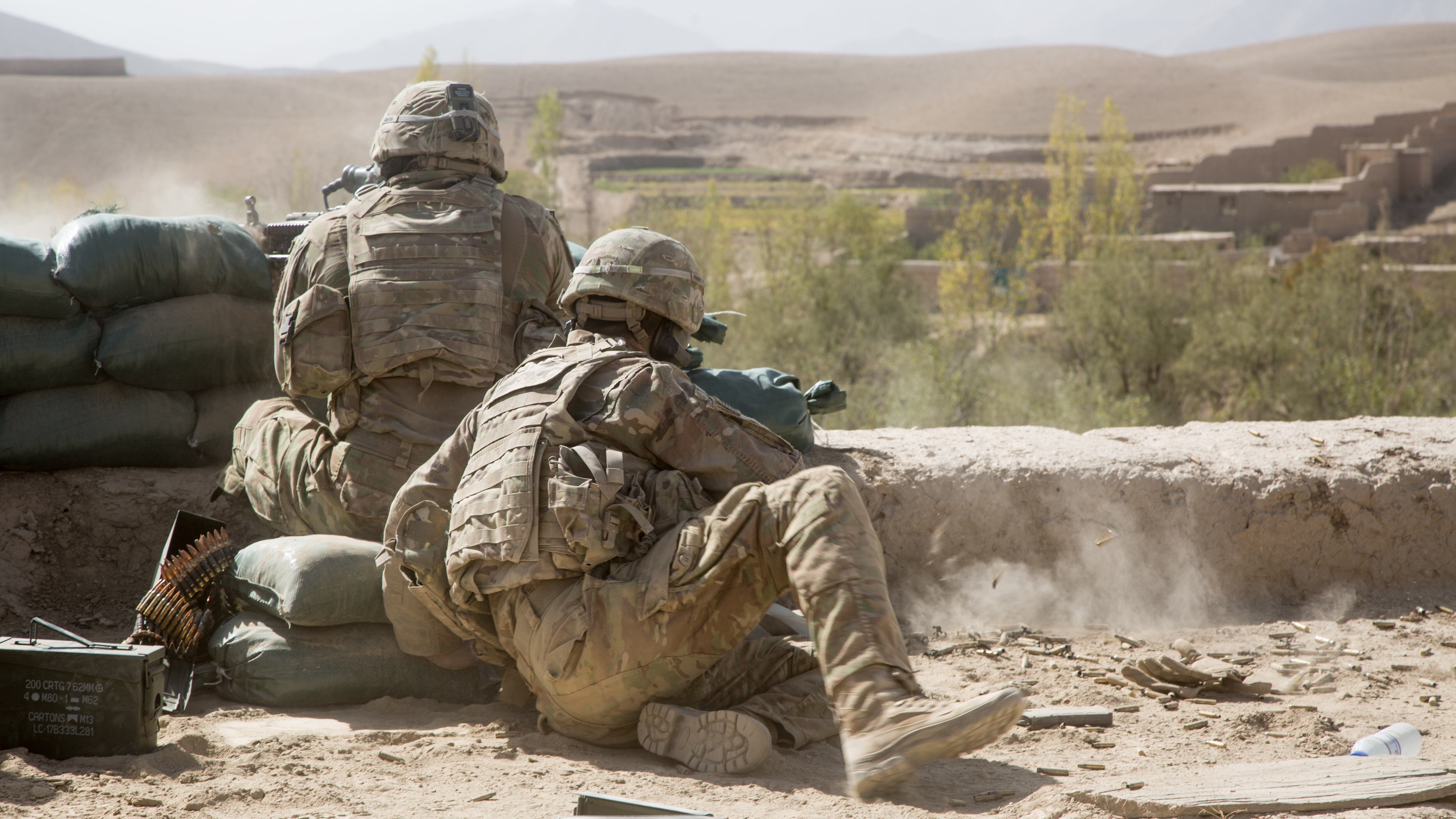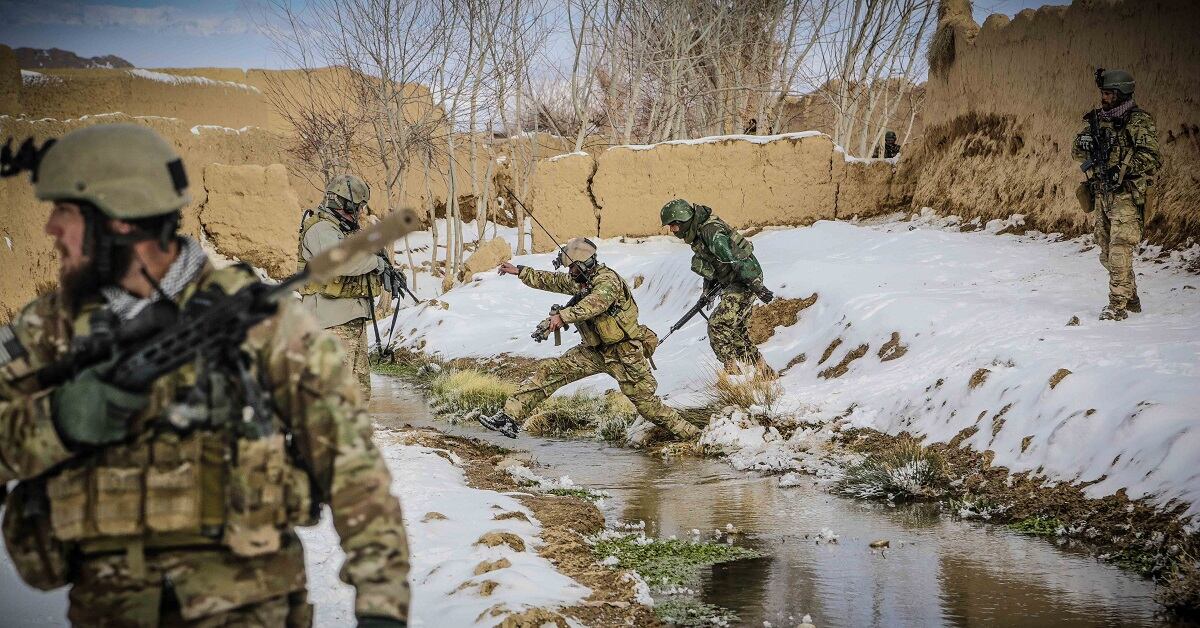Commando readiness across the service branches is at an all-time high thanks to a reduction in global missions, but the casualties they have taken in war zones are also up compared to the rest of the military, a U.S. Special Operations Command official acknowledged Wednesday.
All 10 U.S. deaths in Afghanistan to date this year, with the exception of three Marines killed by an IED near Bagram airfield, were Army special operations troops or their enablers.
Of 13 deaths last year in Afghanistan, nine were special operators and their enablers and three were troops on advising missions killed by insider attacks. All but one combat casualty — a special operations airman — belonged to the Army.
“While it’s true that the majority of casualties have been special operations forces, the majority of the missions and some of the intricate tasks we’ve been asked to accomplish have — unfortunately or fortunately — fallen to special operations forces," Command Chief Master Sgt. Gregory A. Smith, SOCOM’s senior enlisted leader, said at the Pentagon.
“I will tell you that the readiness of the force is at an all-time high right now," Smith added. "We’re actually at a 25 percent reduction on global SOF taskings.”
Smith said that SOCOM’s current deployment-to-dwell ratio is 1:2 or greater, meaning a unit is at home station for at least double the amount of time that they’re deployed.
Over the last two to three years, SOCOM has taken a look at operational tempo and specific missions to ensure its operators are tasked to do only what special operators are capable of, leaving other missions to conventional forces.

For instance, the Army created the Security Force Assistance Brigade concept to help alleviate the need to train and advise allied nations’ fledgling militaries. The first two SFAB deployments have been to Afghanistan, with a third on the docket this year.
Dedicating conventional forces to training partners frees up SOF troops to focus on kinetic missions. But that also means operators, as well as their infantry uplift, EOD techs and other enablers, take the brunt of combat casualties.
On the U.S. Forces-Afghanistan side of planning, efforts have been made to ensure troops rotate into theater for periods of time that make sense for their manning levels, Command Sgt. Maj. Timothy L. Metheny, the senior enlisted leader for troops in-country, said Wednesday.
“Obviously a unit that’s getting ready to go gets increased personnel to max out what their authorization is under their boots-on-the-ground number,” Metheny said. “But then we have the ability to tailor that to either shorten their rotation or lengthen their rotation based on the time of year, based on the enemy contact and then we can request assistance from some of our partner forces.”
Summer is traditionally the “fighting season” for the Taliban, meaning the hottest months of the year are also the most kinetic. Metheny added that those combat missions, even for SOF troops, are still not about putting U.S. forces in the lead.
“The operations are partner force driven,” he said. “It’s Afghans out front, where the SOF are just training, advising and assisting to the point of need.”

Advise and assist missions are not immune to the turbulence of Afghanistan. Insider attacks appeared to spike last fall, including one the top U.S. commander in country, Gen. Austin S. Miller, was present for in October.
Kandahar police chief Gen. Abdul Raziq, a critical part of Afghanistan’s security, was targeted in the attack and killed.
Preventing those attacks in the future largely comes down to “awareness" training for troops pulling security, Metheny said.
But the U.S. also must be engaged in the information space and understand how the Afghan citizenry and the militants use social media as rumor mills, according to Metheny.
“A perfect example is the Raziq assassination last year," he said. “That was probably the direct result of three different green-on-blue attacks. The Taliban was able to spin that narrative that it was a U.S. conspiracy and we didn’t catch onto it for about a week and a half.”
There was a lot of tension after Raziq’s assassination between the U.S. and Afghan security forces, said Bill Roggio, a senior fellow at the Foundation for Defense of Democracies’ Long War Journal.
“In fact, there was a shootout between the U.S. and Afghan forces as the U.S. ushered General Miller away from the attack,” Roggio said. “The Taliban capitalized on this by seeding a conspiracy theory about the attack.”
That was especially odd, because the Taliban also claimed responsibility for the Raziq assassination immediately following its occurrence, publishing pictures and video of the bodyguard for the governor of Kandahar who had turned sides.
A Czech soldier was killed Oct. 22 in another insider attack following the one against Raziq on Oct. 18, and Maj. Brent Taylor, a Utah Army National Guard soldier, was killed by an insider attack on Nov. 3.
Metheny didn’t say which insider attacks were attributed to the conspiracy theory that asserted the U.S. military, not the Taliban, really killed Raziq.
But once those conspiracies were identified, they were highlighted by U.S. forces to Afghan local officials who then came out against them and helped squash the narrative, according to Metheny.
Kyle Rempfer was an editor and reporter who has covered combat operations, criminal cases, foreign military assistance and training accidents. Before entering journalism, Kyle served in U.S. Air Force Special Tactics and deployed in 2014 to Paktika Province, Afghanistan, and Baghdad, Iraq.




